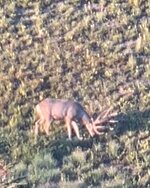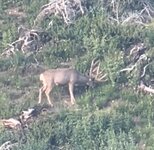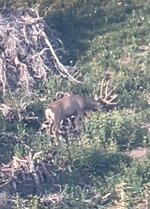cwitt
FNG
- Joined
- Mar 9, 2021
- Messages
- 57
Not that I believe that solution is the perfect one or the end all be all, but why would you push back against zone management for deer? Is it not working for elk? It feels like it is considering our elk populations.. What would you be giving up by going to a zone system? I can’t personally think of much. As far as what would constitute capped tags, I would imagine similar criteria to what we are using for elk already.I carved up the quote of your post to focus on specific things. see the bolded text to correlate my responses.
"We are painfully slow to change or adapt in this state"
I agree that Idaho's ability to institute change is a slow process. Sometimes I am frustrated by it and other times I am grateful for it so I'm not sure I would change the process. I could be convinced either way I think.
"Capped tags in areas that need it,"
I would push back against zone deer management or capping units. Capping effectively creates the same problem as limited entry. Second, how do you define "need". Antler size? Buck : Doe ratios? Fawn : Doe ratios. Which metrics should be used to establish a need for change?
"The drop off in deer numbers, trophy quality, etc. over the last 15-20 years is heart breaking. And there has been next to nothing done by F&G to slow it"
What would you suggest? I would suggest an age study before and after any change to see if it made any difference in age class. I'm not aware of any limited entry unit regardless of management type that is producing the quality that it was 20 years ago. I doubt that cutting tags will fix anything in the long term.
"All of that considered, does that sound like a situation that would benefit from being opened to general hunting, even if it is with a restricted weapon?"
I think there will be units that a general season structure might not work if escapement is too low due to roads, terrain, etc. That may be one of those places. But we need to define what level of escapement is too low. I think we need to do more age studies to firmly establish what is actually happening in terms of buck survival. We can't rely on trophy quality as a metric, it is too unreliable.
Choose your weapon.
Although it would be my preferred change in place of limited entry, I am also hesitant of a piecemeal approach to choose your weapon general seasons. If unit X is placed in an archery only general season it won't make every hunter pick up a bow. It will displace rifle hunters to surrounding units and exacerbate crowding and hunting pressure there. Same with muzzleloader and even open sight rifle. Those willing to use less effective weapons might love it but the scoped rifle guys will get more and more pinched. Eventually they will want more changes. I would still pick this route over limited entry for everything but I don't think we are at that point yet.
As far as what I would suggest, I’ll share the cliff notes of what I’ve said at F&G meetings, in letters, and in conversations with biologists. The issue in this particular area is the compounding effect of large harvest of young bucks in an unlimited fashion clearing out the bottom end of the age class, a long season of too many tags hunting the top end of the age class at the time they’re most vulnerable, technology, and what’s known as a predator pit. To fix it you have to address as many of those components as possible. Limit 2 point harvest to either a youth only season, an unlimited 2nd choice quota in the draw system, or best of all eliminate the hunt option entirely as it was never intended to be a permanent solution. If the tag number and weapon is to the stay the same, change the season dates on the limited tag to match those of other premium limited entry tags in the state, which is to say not have an open season the entirety of the rut. Or shorten the season. Weapons restrictions and tag cuts could also be used. Any combination of these would very likely have a positive affect.
To be clear, what I am referring to is one very specific area with its own unique challenges. The reason I bring them up is that it illustrates that while holistically mule deer are struggling, the problems facing them are too unique and nuanced to be solved with blanket approaches.



